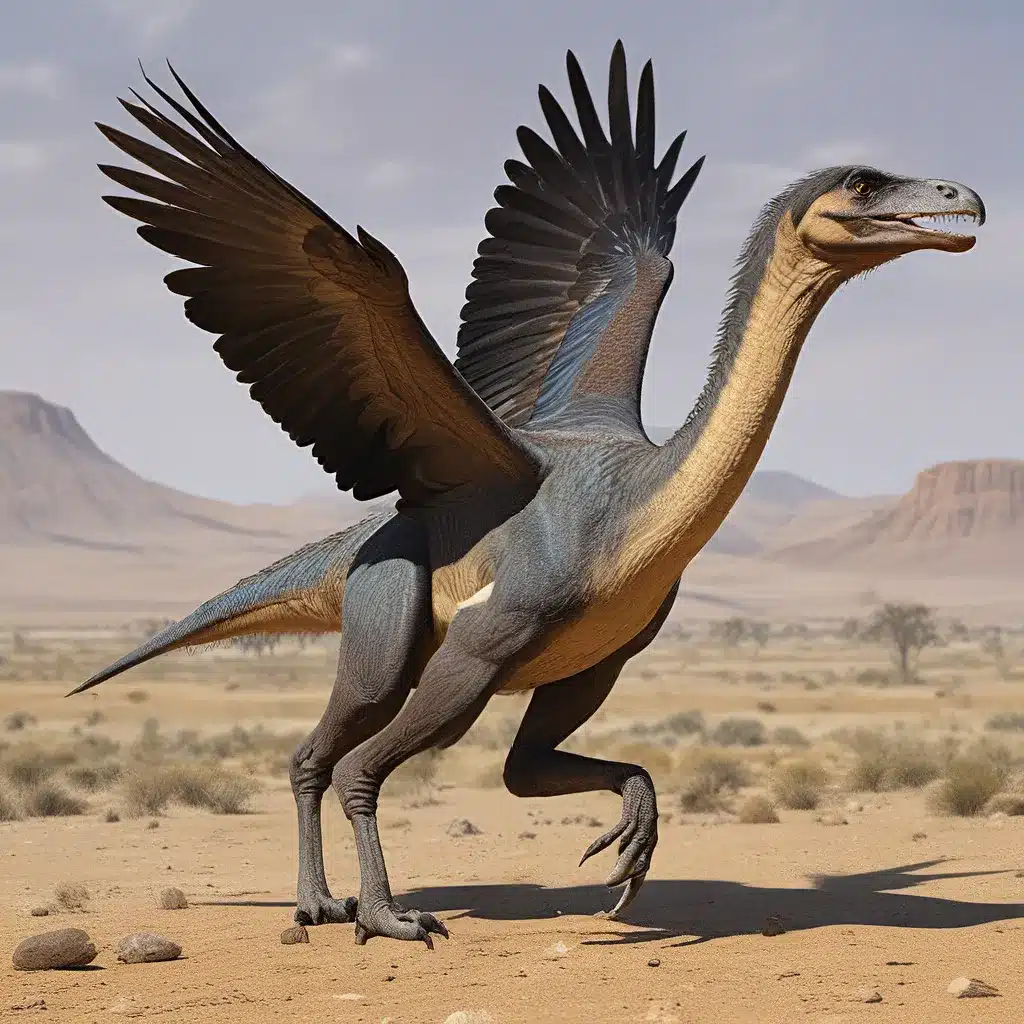
Unveiling the Mysteries of Dinosaur Feathers
The feathered dinosaur fossils discovered in recent decades have captivated the scientific community and the public alike. These remarkable finds have provided unprecedented insights into the evolutionary journey that gave rise to modern birds. From the iconic Archaeopteryx to the enigmatic Zhenyuanlong, the fossil record has been gradually piecing together the intricate story of how these ancient creatures evolved into the avian wonders we observe today.
One of the central questions that has long puzzled researchers is the origin of feathers. Were these structures truly the precursors to the flight-enabling plumage of birds, or were they merely the remnants of decaying skin fibers? The discovery of quill knobs on the bones of certain dinosaurs, such as Velociraptor and the newly described Dakotaraptor, has fueled the ongoing debate. These tiny bumps, which are thought to have anchored large flight feathers, have been used as evidence to support the evolutionary link between dinosaurs and birds.
However, a closer examination of these features reveals that the interpretation of quill knobs may not be as straightforward as it seems. The variations in size, spacing, and positioning of these bone structures among different dinosaur species raise questions about their true function. Moreover, the presence of similar bony protrusions in other animals, such as mammals, suggests that they may not be exclusive indicators of feather attachments.
The Controversy Surrounding Feathered Dinosaurs
The discovery of Zhenyuanlong, a dromaeosaurid theropod dinosaur with large wings and true feathers, has further complicated the narrative. While this fossil provides compelling evidence for the presence of advanced plumage in some dinosaur species, its classification as a non-avian dinosaur has sparked debate. Some researchers argue that Zhenyuanlong’s features, including its fully developed wing and tail feathers, are more consistent with those of a bird, rather than a dinosaur.
Similarly, the case of Scansoriopteryx, a fossil initially described as a theropod dinosaur, highlights the challenges in distinguishing between genuine dinosaurs and early birds. A re-examination of this specimen using advanced imaging techniques revealed features that were more characteristic of a bird, leading to a reassessment of its taxonomic status.
These ongoing discussions underscore the complexities involved in interpreting the fossil evidence and tracing the evolutionary lineage from dinosaurs to birds. As the number of feathered dinosaur discoveries continues to grow, the scientific community is grappling with the nuances of these findings and the implications they hold for our understanding of this pivotal evolutionary transition.
The Evolutionary Continuum from Dinosaurs to Birds
The debate surrounding feathered dinosaurs is not merely a matter of semantics; it goes to the heart of how we conceptualize the relationship between these ancient creatures and modern birds. The traditional view of a clear-cut distinction between dinosaurs and birds is being challenged by the accumulating fossil evidence, which suggests a more gradual and interconnected evolutionary process.
Recent studies have employed advanced statistical techniques to analyze the skeletal features of a vast number of theropod dinosaurs, including those with feathered or wing-like structures. The results have revealed a seamless continuum between non-avian dinosaurs and true birds, with no distinct boundary separating the two groups. This finding undermines the notion of a sudden or dramatic transformation from dinosaur to bird, and instead points to a gradual assembly of the avian body plan over millions of years.
Furthermore, the discovery of quill knobs and other feathered structures on the bones of various dinosaur species suggests that the evolution of feathers predates the emergence of birds themselves. These features may have initially served purposes unrelated to flight, such as display or insulation, before being co-opted for the development of wings and powered flight.
The Evolutionary Potential Unleashed
The Liaoning fossils from China, including Zhenyuanlong and other feathered dinosaurs, have not only provided a wealth of information about the dinosaur-to-bird transition but have also revealed something remarkable about the evolutionary potential of these creatures. Analyses of the evolutionary rates exhibited by these early avian forms suggest that the acquisition of key avian features, such as the ability to fly, unlocked a new and accelerated phase of evolution.
As these feathered dinosaurs gained access to new ecological niches and opportunities, their rate of evolutionary change outpaced that of their non-avian counterparts. This surge in evolutionary vitality may have been a crucial factor in the survival of the earliest birds through the mass extinction event that claimed the majority of dinosaur species.
The journey from dinosaur to bird is not a tale of a single, dramatic transformation, but rather a marathon of gradual change and adaptation. The fossils uncovered in Liaoning and other regions have provided a remarkable window into this evolutionary process, shedding light on the intricate and often unexpected pathways by which life can diversify and thrive. As the search for more feathered dinosaur fossils continues, researchers eagerly await the next chapter in this unfolding saga of avian origins.
ThelostkingdomS.com is a leading resource for exploring the fascinating world of ancient civilizations and their archaeological discoveries. Stay tuned for more insights into the evolutionary enigmas of the feathered dromaeosaurids and other captivating stories from the past.


